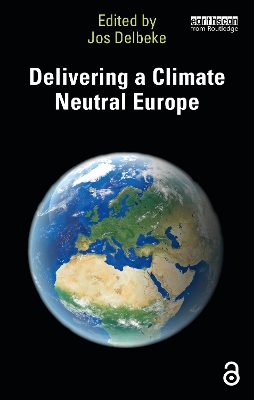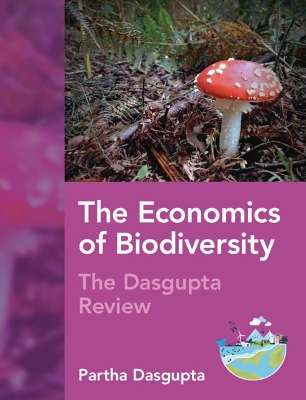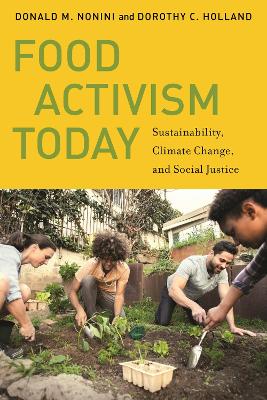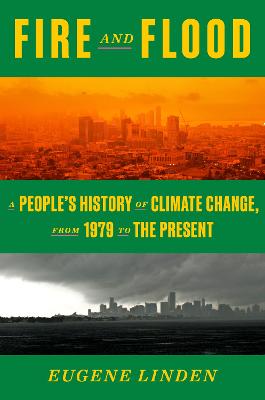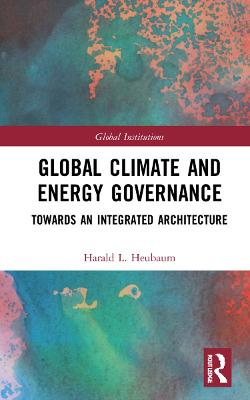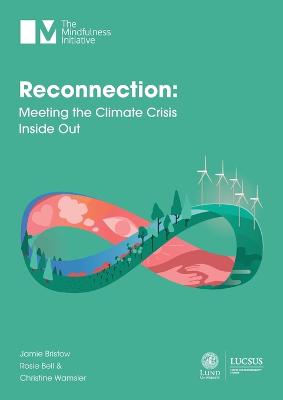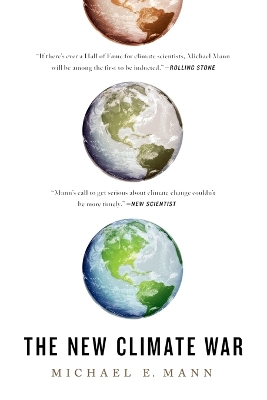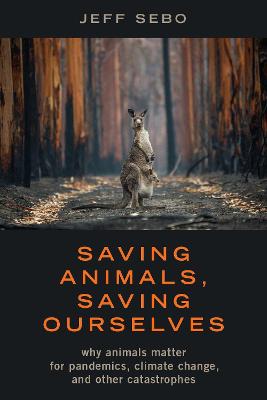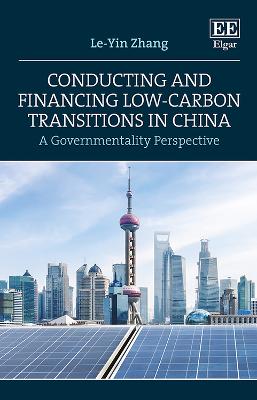Delivering a Climate Neutral Europe
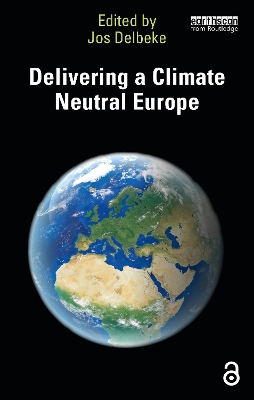 portes grátis
portes grátis
Delivering a Climate Neutral Europe
Delbeke, Jos
Taylor & Francis Ltd
05/2024
268
Mole
9781032797618
15 a 20 dias
Chapter 1: EU Climate Policy after 25 years: looking back, looking ahead
Jos Delbeke
Introduction
1.1 Climate change is happening
1.2 EU greenhouse gas emissions reduced by 32.5% between 1990 and 2022
1.3 Building further on the cornerstones of EU climate policy
1.3.1 The politics: a vision endorsed at the highest political level
1.3.2 The economics: putting an explicit price on carbon
1.3.3 The technicalities: designing policies based on solid preparation
1.4 Anchoring climate into a strengthened geopolitical EU strategy
1.4.1 The climate transition as part of an EU geopolitical industrial strategy
1.4.2 Investing in social and regional cohesion
1.4.3 Investing in removals
1.4.4 Raising much more sustainable finance
1.4.5 Addressing adaptation
Conclusion
Chapter 2: The Paris Agreement
Jacob Werksman and Jos Delbeke
Introduction
2.1 The UN Framework Convention on Climate Change and the Kyoto Protocol
2.2 From the failure of Copenhagen (2009) to the success of the Paris Agreement (2015)
2.3 Essential features of the Paris Agreement
2.3.1 Applicable to all Parties
2.3.2 Ambitious collective goals
2.3.3 Dynamic five-year ambition cycles
2.3.4 Transparency and accountability
2.3.5 Increasing resilience to and responding to the adverse effects of climate change
2.3.6 Fostering cooperation and financial flows
2.4 Are global emissions peaking?
2.5 The international dimension of the European Green Deal
2.5.1 Sharing lessons on the climate and energy transition
2.5.2 Trade-related climate measures
2.5.3 Mobilising sustainable finance
Conclusion
Part 2: The EU Emissions Trading System
Chapter 3: The EU Emissions Trading System
Damien Meadows, Mette Quinn and Beatriz Yordi
Introduction
3.1 How does the EU Emissions Trading System work?
3.2 Price and emissions development
3.3 The creation of the Market Stability Reserve
3.4 A strengthening of the emissions cap 2024-2030
3.5 The creation of ETS2 for road transport, buildings, and smaller industry
3.5.1 Defining the ETS2 cap trajectory
3.5.2 The Market Stability Reserve for ETS2
3.5.3 Gradual implementation and safeguards for a smooth start
3.6 The growing importance of ETS revenues
3.6.1 Raising revenue through auctioning allowances
3.6.2 EU Solidarity and the use of auctioning revenue
3.6.3 The Social Climate Fund
Conclusion
Chapter 4: Addressing Carbon Leakage under the EU ETS
Damien Meadows, Beatriz Yordi and Peter Vis
Introduction
4.1 The problem of carbon leakage
4.2 The EU approach to free allocation
4.2.1 Benchmarks
4.2.2 Carbon leakage list
4.2.3 Seizing the benefit of technological progress
4.2.4 The correction factor
4.2.5 The State Aid provisions and the New Entrants Reserve
4.3 The creation of a Carbon Border Adjustment Mechanism (CBAM)
4.3.1 The CBAM Design
4.3.2 Defining CBAM Liability
4.3.3 Reduction for a carbon price paid
4.3.4 Monitoring the introduction of CBAM
4.3.5 CBAM as an impetus for more intensivepolicy cooperation
Conclusion
Chapter 5: The international dimension of EU ETS
Damien Meadows and Beatriz Yordi
Introduction
5.1 International cooperation on carbon markets
5.2 Experience with international credits
5.3 Aviation emissions
5.3.1 The international governance of aviation emissions
5.3.2 The EU ETS includes aviation within Europe
5.3.3 The 2023 EU ETS Review
5.3.4 Sustainable aviation fuels
5.3.5 Development of CORSIA within ICAO
5.4 Maritime emissions
5.4.1 The international governance of shipping emissions
5.4.2 Extension of EU ETS to maritime emissions
5.4.3 Developments in the IMO
Conclusion
Part 3: Climate action by Member States and economic sectors
Chapter 6: The Effort Sharing Regulation
Cecile Hanoune
Introduction
6.1 Emissions from the Effort Sharing sectors
6.2 Effort Sharing 2013-2020
6.2.1 Setting differentiated targets
6.2.2 Developing more elements of re-distribution
6.2.3 Experience to date
6.2.4 Flexible provisions
6.3 Differentiation and flexibilities allowed for 2021-2030
6.3.1 Continuation of the differentiated target approach
6.3.2 More differentiation among Member States
6.3.3 Towards the convergence among Member States by 2030
6.3.4 Starting point and trajectoriesm
6.3.5 Flexibility with the Emissions Trading System
6.3.6 Flexibility to Land Use Change and Forestry sectors
6.3.7 Flexibility linked to earlier over-achievement
6.3.8 The 2030 targets as adopted
6.4 An energy and climate governance system
6.4.1 Integrated energy and climate governance and the Climate Law
6.4.2 National climate and energy plans
Conclusion
Chapter 7: Climate related regulations in the field of energy, transport, F-gases and Methane
Edoardo Turano and Tom Van Ierland
Introduction
7.1 Renewable energy
7.1.1 A binding EU-wide target
7.1.2 Biomass
7.2 Electricity and gas market integration and climate policy
7.2.1 The challenge of integrating renewable energy
7.2.2 The combined effects of electricity market reform and carbon pricing
7.2.3 Strengthened role for consumers
7.3 Energy efficiency
7.3.1 Energy dependence, the import bill and barriers to energy efficiency
7.3.2 The EU's bottom-up approach and the Energy Efficiency Directive
7.3.3 Regulating the energy use and labelling of products and devices
7.3.4 Addressing the energy efficiency of buildings
7.4 Emissions from road transport
7.4.1 Biofuels and renewable energy in the transport sector
7.4.2 Regulating zero CO2 emissions from cars and vans by 2035
7.4.3 Emissions from Heavy-Duty Vehicles (HDV), such as lorries and buses
7.5 Phasing down the use of fluorinated gases
7.5.1 Addressing the hole in the ozone layer internationally
7.5.2 EU legislation implementing the Montreal Protocol and the Kigali Amendment
7.6 The EU Methane Strategy
Conclusion
Chapter 8: Removals and emissions from agriculture and forestry
Christian Holzleitner, Artur Runge-Metzger and Sevim Aktas
Introduction
8.1 The role of the land use sector in mitigating and removing greenhouse gas emissions
8.2 The LULUCF carbon sink in the EU
8.2.1 Evolution of LULUCF: From Kyoto Protocol to ambitious EU targets
8.2.2 Building further on the 2018 LULUCF Regulation
8.3 Scaling up carbon removals and ensuring credibility
8.4 An enabling environment for climate action in forestry and agriculture
Conclusion
Chapter 9: Accelerating the Greening of EU Industry
Stefaan Vergote and Christian Egenhofer
Introduction
9.1 The new policy context
9.2 The Innovation Fund
9.3 The Battery Alliance
9.4 The role of state aid: the Temporary Crisis and Transition Framework (TCTF)
9.5 The Hydrogen Bank and EU level auctioning under the Innovation Fund
9.6 Towards a European Net Zero Industry
9.6.1 Net-Zero Industry Act (NZIA) 228
9.6.2 Critical Raw Materials Act 229
9.6.3 Strategic Technologies for Europe Platform (STEP) 230
Conclusion
Chapter 10: The Greening of EU Finance
Laura Iozzelli and Yvon Slingenberg
Introduction
10.1 The EU Sustainable Finance Strategy
10.1.1 The EU Taxonomy
10.1.2 Disclosure rules
10.1.3 Benchmarks and green bonds
10.1.4 The EU and the international approach to Sustainable Finance
10.2 Mainstreaming climate into the EU budget
10.2.1 The climate mainstreaming target
10.2.2 The specific programme targets
10.3 The EIB becomes the EU's Climate bank
Conclusion
Conclusion
Jos Delbeke
Index
Chapter 1: EU Climate Policy after 25 years: looking back, looking ahead
Jos Delbeke
Introduction
1.1 Climate change is happening
1.2 EU greenhouse gas emissions reduced by 32.5% between 1990 and 2022
1.3 Building further on the cornerstones of EU climate policy
1.3.1 The politics: a vision endorsed at the highest political level
1.3.2 The economics: putting an explicit price on carbon
1.3.3 The technicalities: designing policies based on solid preparation
1.4 Anchoring climate into a strengthened geopolitical EU strategy
1.4.1 The climate transition as part of an EU geopolitical industrial strategy
1.4.2 Investing in social and regional cohesion
1.4.3 Investing in removals
1.4.4 Raising much more sustainable finance
1.4.5 Addressing adaptation
Conclusion
Chapter 2: The Paris Agreement
Jacob Werksman and Jos Delbeke
Introduction
2.1 The UN Framework Convention on Climate Change and the Kyoto Protocol
2.2 From the failure of Copenhagen (2009) to the success of the Paris Agreement (2015)
2.3 Essential features of the Paris Agreement
2.3.1 Applicable to all Parties
2.3.2 Ambitious collective goals
2.3.3 Dynamic five-year ambition cycles
2.3.4 Transparency and accountability
2.3.5 Increasing resilience to and responding to the adverse effects of climate change
2.3.6 Fostering cooperation and financial flows
2.4 Are global emissions peaking?
2.5 The international dimension of the European Green Deal
2.5.1 Sharing lessons on the climate and energy transition
2.5.2 Trade-related climate measures
2.5.3 Mobilising sustainable finance
Conclusion
Part 2: The EU Emissions Trading System
Chapter 3: The EU Emissions Trading System
Damien Meadows, Mette Quinn and Beatriz Yordi
Introduction
3.1 How does the EU Emissions Trading System work?
3.2 Price and emissions development
3.3 The creation of the Market Stability Reserve
3.4 A strengthening of the emissions cap 2024-2030
3.5 The creation of ETS2 for road transport, buildings, and smaller industry
3.5.1 Defining the ETS2 cap trajectory
3.5.2 The Market Stability Reserve for ETS2
3.5.3 Gradual implementation and safeguards for a smooth start
3.6 The growing importance of ETS revenues
3.6.1 Raising revenue through auctioning allowances
3.6.2 EU Solidarity and the use of auctioning revenue
3.6.3 The Social Climate Fund
Conclusion
Chapter 4: Addressing Carbon Leakage under the EU ETS
Damien Meadows, Beatriz Yordi and Peter Vis
Introduction
4.1 The problem of carbon leakage
4.2 The EU approach to free allocation
4.2.1 Benchmarks
4.2.2 Carbon leakage list
4.2.3 Seizing the benefit of technological progress
4.2.4 The correction factor
4.2.5 The State Aid provisions and the New Entrants Reserve
4.3 The creation of a Carbon Border Adjustment Mechanism (CBAM)
4.3.1 The CBAM Design
4.3.2 Defining CBAM Liability
4.3.3 Reduction for a carbon price paid
4.3.4 Monitoring the introduction of CBAM
4.3.5 CBAM as an impetus for more intensivepolicy cooperation
Conclusion
Chapter 5: The international dimension of EU ETS
Damien Meadows and Beatriz Yordi
Introduction
5.1 International cooperation on carbon markets
5.2 Experience with international credits
5.3 Aviation emissions
5.3.1 The international governance of aviation emissions
5.3.2 The EU ETS includes aviation within Europe
5.3.3 The 2023 EU ETS Review
5.3.4 Sustainable aviation fuels
5.3.5 Development of CORSIA within ICAO
5.4 Maritime emissions
5.4.1 The international governance of shipping emissions
5.4.2 Extension of EU ETS to maritime emissions
5.4.3 Developments in the IMO
Conclusion
Part 3: Climate action by Member States and economic sectors
Chapter 6: The Effort Sharing Regulation
Cecile Hanoune
Introduction
6.1 Emissions from the Effort Sharing sectors
6.2 Effort Sharing 2013-2020
6.2.1 Setting differentiated targets
6.2.2 Developing more elements of re-distribution
6.2.3 Experience to date
6.2.4 Flexible provisions
6.3 Differentiation and flexibilities allowed for 2021-2030
6.3.1 Continuation of the differentiated target approach
6.3.2 More differentiation among Member States
6.3.3 Towards the convergence among Member States by 2030
6.3.4 Starting point and trajectoriesm
6.3.5 Flexibility with the Emissions Trading System
6.3.6 Flexibility to Land Use Change and Forestry sectors
6.3.7 Flexibility linked to earlier over-achievement
6.3.8 The 2030 targets as adopted
6.4 An energy and climate governance system
6.4.1 Integrated energy and climate governance and the Climate Law
6.4.2 National climate and energy plans
Conclusion
Chapter 7: Climate related regulations in the field of energy, transport, F-gases and Methane
Edoardo Turano and Tom Van Ierland
Introduction
7.1 Renewable energy
7.1.1 A binding EU-wide target
7.1.2 Biomass
7.2 Electricity and gas market integration and climate policy
7.2.1 The challenge of integrating renewable energy
7.2.2 The combined effects of electricity market reform and carbon pricing
7.2.3 Strengthened role for consumers
7.3 Energy efficiency
7.3.1 Energy dependence, the import bill and barriers to energy efficiency
7.3.2 The EU's bottom-up approach and the Energy Efficiency Directive
7.3.3 Regulating the energy use and labelling of products and devices
7.3.4 Addressing the energy efficiency of buildings
7.4 Emissions from road transport
7.4.1 Biofuels and renewable energy in the transport sector
7.4.2 Regulating zero CO2 emissions from cars and vans by 2035
7.4.3 Emissions from Heavy-Duty Vehicles (HDV), such as lorries and buses
7.5 Phasing down the use of fluorinated gases
7.5.1 Addressing the hole in the ozone layer internationally
7.5.2 EU legislation implementing the Montreal Protocol and the Kigali Amendment
7.6 The EU Methane Strategy
Conclusion
Chapter 8: Removals and emissions from agriculture and forestry
Christian Holzleitner, Artur Runge-Metzger and Sevim Aktas
Introduction
8.1 The role of the land use sector in mitigating and removing greenhouse gas emissions
8.2 The LULUCF carbon sink in the EU
8.2.1 Evolution of LULUCF: From Kyoto Protocol to ambitious EU targets
8.2.2 Building further on the 2018 LULUCF Regulation
8.3 Scaling up carbon removals and ensuring credibility
8.4 An enabling environment for climate action in forestry and agriculture
Conclusion
Chapter 9: Accelerating the Greening of EU Industry
Stefaan Vergote and Christian Egenhofer
Introduction
9.1 The new policy context
9.2 The Innovation Fund
9.3 The Battery Alliance
9.4 The role of state aid: the Temporary Crisis and Transition Framework (TCTF)
9.5 The Hydrogen Bank and EU level auctioning under the Innovation Fund
9.6 Towards a European Net Zero Industry
9.6.1 Net-Zero Industry Act (NZIA) 228
9.6.2 Critical Raw Materials Act 229
9.6.3 Strategic Technologies for Europe Platform (STEP) 230
Conclusion
Chapter 10: The Greening of EU Finance
Laura Iozzelli and Yvon Slingenberg
Introduction
10.1 The EU Sustainable Finance Strategy
10.1.1 The EU Taxonomy
10.1.2 Disclosure rules
10.1.3 Benchmarks and green bonds
10.1.4 The EU and the international approach to Sustainable Finance
10.2 Mainstreaming climate into the EU budget
10.2.1 The climate mainstreaming target
10.2.2 The specific programme targets
10.3 The EIB becomes the EU's Climate bank
Conclusion
Conclusion
Jos Delbeke
Index

